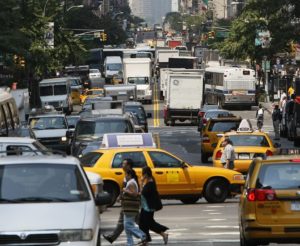 Air pollution is a killer, but it also does damage in subtle ways - such as having effects on the brain. A recent study found that early childhood exposure to high amounts of traffic-related air pollution (city life, living next to a highway) resulted in the brain having structural changes (differences in brain volume and cortical thickness) at the age of 12 when compared to children who did not have such high exposure to traffic-related air pollution. This means that the changes were permanent.
Air pollution is a killer, but it also does damage in subtle ways - such as having effects on the brain. A recent study found that early childhood exposure to high amounts of traffic-related air pollution (city life, living next to a highway) resulted in the brain having structural changes (differences in brain volume and cortical thickness) at the age of 12 when compared to children who did not have such high exposure to traffic-related air pollution. This means that the changes were permanent.
The study was conducted in Cincinnati, Ohio, but traffic-related air pollution (TRAP) is a problem throughout the world. This type of air pollution has all sorts of gaseous pollutants, fine and ultrafine particles, heavy metals, carbon, and polycyclic aromatic hydrocarbons. Diesel exhaust may be even worse - it has more than 40 toxic pollutants. When people breathe in the pollutants, the pollutants then can travel to the brain where they can cause damage.
What will it take for governments to really accept the dangers of air pollution and to take the hard steps necessary to toughen standards? Instead of loosening all sorts of pollution standards, which is what is going on in the United States today.
[More studies about air pollution and the brain, including higher risks of dementia, millions of ultra-fine particles getting to the heart and brain and lodging there, and shrinking of brain volume.]
From Science Daily: High air pollution exposure in 1-year-olds linked to structural brain changes at age 12 ...continue reading "What Is Air Pollution From Traffic Doing To Your Brain?"

 Another reason to be concerned about air pollution. And another study showing a link with environmental chemicals (this time coarse and fine particulate matter, known as PM10, which arises in part from traffic-related air pollution) and autism. From Science Daily:
Another reason to be concerned about air pollution. And another study showing a link with environmental chemicals (this time coarse and fine particulate matter, known as PM10, which arises in part from traffic-related air pollution) and autism. From Science Daily: